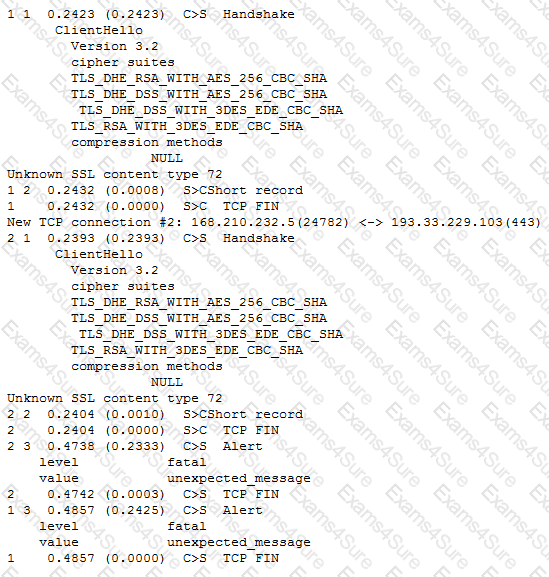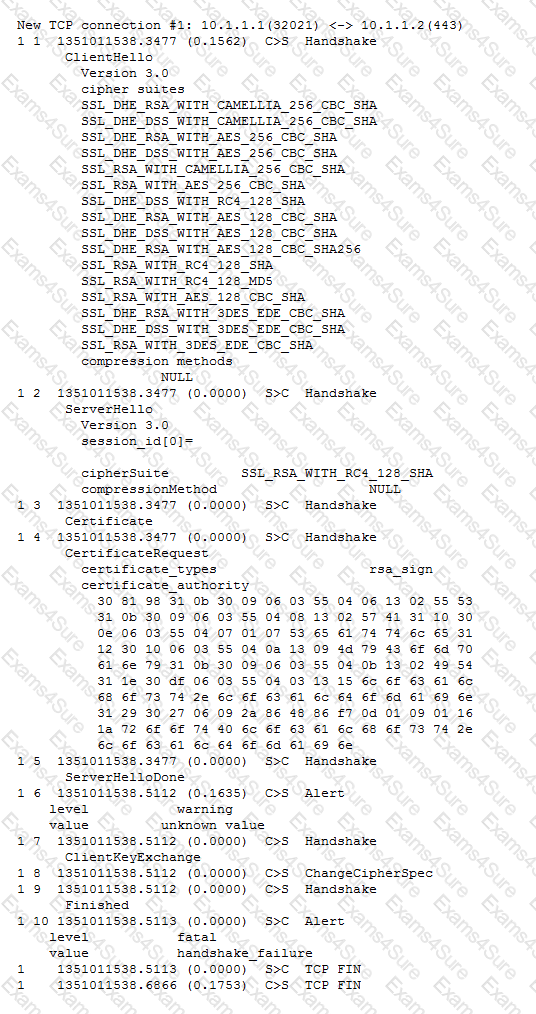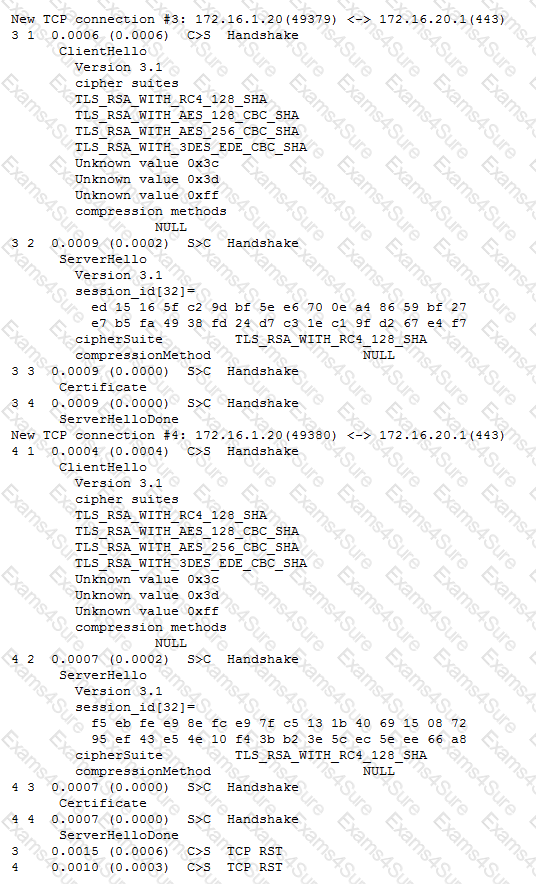LTM Specialist: Maintain & Troubleshoot
Last Update 2 months ago
Total Questions : 209
LTM Specialist: Maintain & Troubleshoot is stable now with all latest exam questions are added 2 months ago. Incorporating 301b practice exam questions into your study plan is more than just a preparation strategy.
301b exam questions often include scenarios and problem-solving exercises that mirror real-world challenges. Working through 301b dumps allows you to practice pacing yourself, ensuring that you can complete all LTM Specialist: Maintain & Troubleshoot practice test within the allotted time frame.
An LTM Specialist must perform a packet capture on a virtual server with an applied standard FastL4 profile. The virtual server 10.0.0.1:443 resides on vlan301.
Which steps should the LTM Specialist take to capture the data payload successfully while ensuring no other virtual servers are affected?
An FTP monitor is NOT working correctly.
Which three pieces of information does the LTM Specialist need to provide to ensure a properly working FTP monitor? (Choose three.)
-- Exhibit –

-- Exhibit --
Refer to the exhibit.
A client attempts to connect from a Google Chrome browser to a virtual server on a BIG-IP LTM. The virtual server is SSL Offloaded. When the client connects, the client receives an SSL error. The client receives the same errors when trying Mozilla Firefox and Internet Explorer browsers.
The LTM Specialist does an ssldump on the virtual server and receives the results as per the exhibit.
How should this be resolved?
-- Exhibit –

-- Exhibit --
Refer to the exhibit.
A user is unable to access a secure application via a virtual server.
What is the cause of the issue?
-- Exhibit --

-- Exhibit --
Refer to the exhibit.
A company uses a complex piece of client software that connects to one or more virtual servers (VS) hosted on an LTM device. The client software is experiencing issues. An LTM Specialist must determine the cause of the problem. The LTM Specialist has the tcpdump extract. The client loses connection with the LTM device.
Where is the reset originating?
A new web application is hosted at www.example.net, but some clients are still pointing to the legacy web application at www.example.com.
Which iRule will allow clients referencing www.example.com to access the new application?
A customer needs to intercept all of the redirects its application is sending to clients. When a redirect is matched, the customer needs to log a message including the client IP address.
Which iRule should be used?
A user is having issues with connectivity to an HTTPS virtual server. The virtual server is on the LTM device's external vlan, and the pools associated with the virtual server are on the internal vlan. An LTM Specialist does a tcpdump on the external interface and notices that the host header is incomplete.
In which location should the LTM Specialist put a traffic analyzer to gather the most pertinent data?
An LTM Specialist is customizing local traffic logging.
Which traffic management OS alert level provides the most detail?
An LTM Specialist is troubleshooting an issue where one LTM device in a three LTM device group is failing to synchronize after a synchronize to group command is issued. The LTM Specialist verifies there are no packet filters, port lock down, or network issues preventing the connection.
What are two reasons the synchronization group is having issues? (Choose two.)


TESTED 31 Mar 2025
Hi this is Romona Kearns from Holland and I would like to tell you that I passed my exam with the use of exams4sure dumps. I got same questions in my exam that I prepared from your test engine software. I will recommend your site to all my friends for sure.
Our all material is important and it will be handy for you. If you have short time for exam so, we are sure with the use of it you will pass it easily with good marks. If you will not pass so, you could feel free to claim your refund. We will give 100% money back guarantee if our customers will not satisfy with our products.